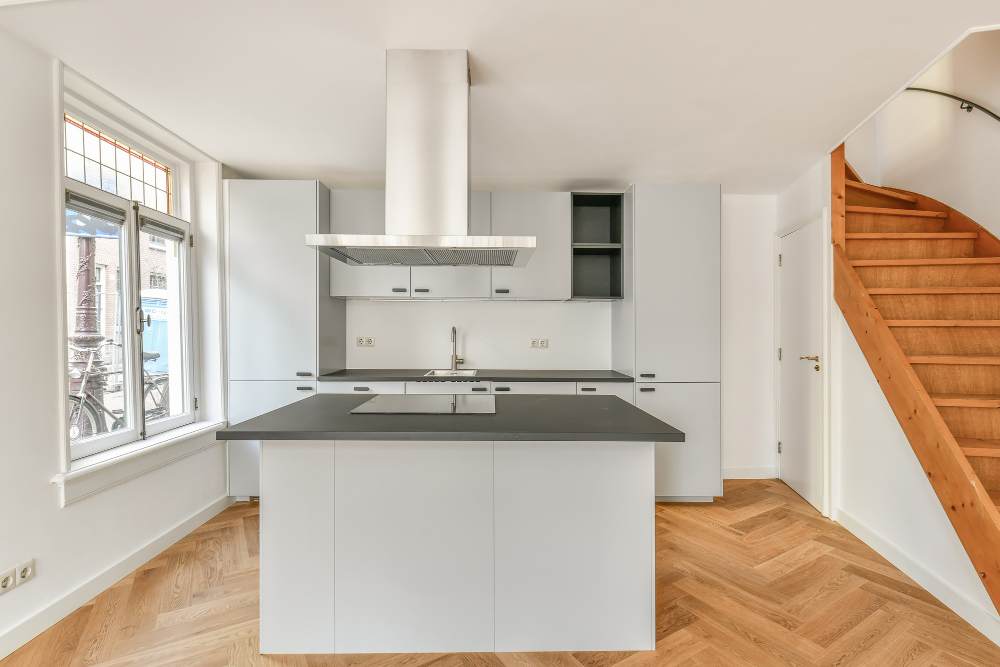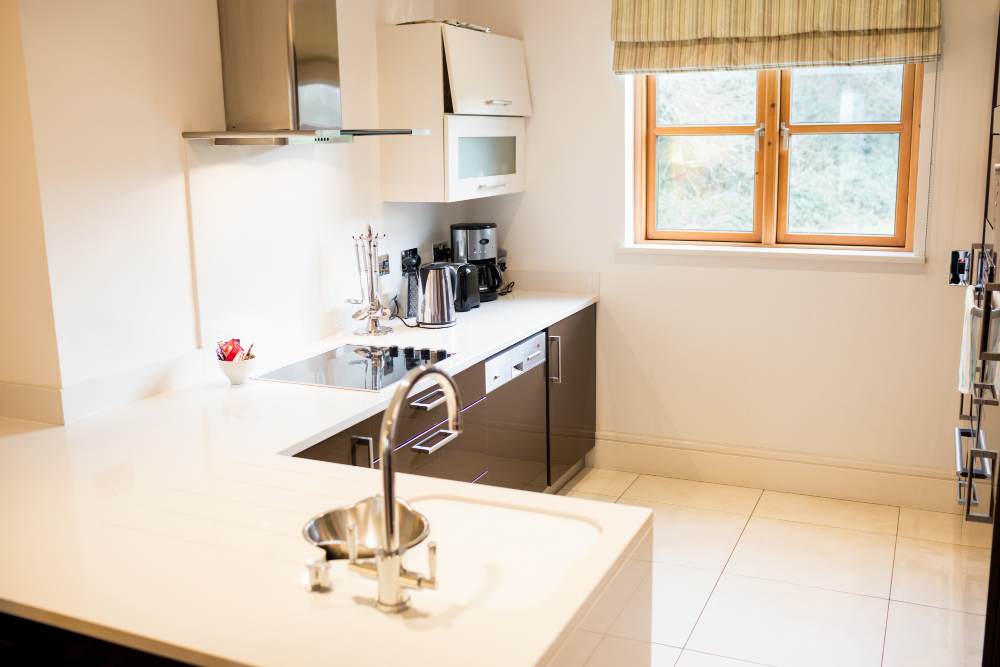Showroom closed today, Get directions here
Call us Now on 01772 651615
What are Upstands and Splashbacks?
- admin
- May 27, 2024

As you envision your ideal kitchen space, your mind might wander through the array of overarching styles of the space. While you may have come across terms like upstands and splashbacks, their significance might still elude you.
Fear not, as we delve into the realm of kitchen design to unravel the mysteries and perks of incorporating upstands and splashbacks. With this knowledge, you’ll be equipped to make informed decisions for your kitchen renovation project.
What Are Upstands?
An upstand serves as a barrier between the kitchen counter and the wall, typically rising around 60 to 120mm from the countertop. Its main job is to prevent any liquids from seeping behind the cabinets and to catch everyday spills and splashes. In this way, it makes cleaning much easier compared to dealing with kitchen walls.
Usually made from the same material as the countertop but thinner, around 20mm thick compared to the standard 30mm for countertops. The upstand blends seamlessly with the overall design, adding a subtle touch without drawing too much attention.
What Are Splashbacks?
In the kitchen, a splashback is like a shield for the wall behind the stove, sink, and where food prep happens. You can find them in all sorts of materials and styles, like tiles, glass, or stainless steel. Their main job is to stop cooking messes and food splatters from staining or messing up the walls, which can be a hassle to clean and might even cause damage over time.
They’re not just practical but also let you jazz up your kitchen, adding a decorative touch that fits with the overall look and feel of the space.

Why Do We Need Upstands and Splashbacks?
Installing upstands and splashbacks offers more than just a pretty look:
- They shield your kitchen walls from moisture, stains, and harm that cooking and cleaning can bring.
- Quality materials like glass and stainless steel are a breeze to wipe down, while stone offers durability that withstands time.
- With various hues and patterns, upstands and splashbacks can stand standout excellently in your kitchen.
- These additions provide a clean solution by preventing mould and mildew from creeping into the kitchen’s most exposed spots.
Diverse Options of Upstands and Splashbacks
Here are the most popular options in the upstands and splashbacks design material to elevate your kitchen aesthetic:
Marble, Granite, Quartz
Marble and granite bring a timeless elegance to your kitchen. Their inherent beauty, coupled with easy maintenance, makes them a go-to choice. They effortlessly hide any splatters or smudges with natural flecks and quirks, keeping your kitchen looking pristine.
Additionally, quartz offers a spectrum of hues and customisation options, letting you craft a kitchen uniquely. Its durability ensures it can bear any accidental knocks or bumps without losing its lustre.
Glass
In the realm of kitchen design, glass emerges as a sleek and contemporary choice for splashbacks. Its cleaning routine differs from traditional stone material, requiring a trust glass cleaner. Beyond its chic appearance, glass withstands heat. It’s an ideal companion for areas near the hob or sink, providing both style and functionality in one seamless package.
Tiles
Offering a versatility similar to quartz, tiles present an array of customisable options, adapting to fit the contours of your walls. Yet, it’s important to note that tile installation can be a bit more labour-intensive, with the meticulous grouting process and ongoing maintenance demands.
However, for those who appreciate a touch of tradition in their kitchen aesthetic, tiles emerge as a charming choice for upstands and splashbacks around your worktops.

Considerations While Opting for the Right Upstands and Splashbacks
- Financial Boundaries: Upstands and splashbacks span a broad spectrum of prices catering to every budget. Defining your budget beforehand is essential to streamline your options and make a well-informed decision.
- Maintenance: Assess the ease of cleaning and upkeep associated with each upstand and splashback material. This consideration is particularly pertinent for avid cooks, necessitating them to be capable of enduring frequent use. While glass and stainless steel materials offer hassle-free maintenance, others, like tile and stone, may require more diligent care.
- Stylistic Synergy: Delve into how the chosen upstands and splashbacks harmonise with the overarching style and ambience of your kitchen. Choose a design that amplifies the visual allure of your space, taking into account elements such as colour palettes, fixtures, and cabinetry.
- Material Matters: Prioritise materials that align with your practical requirements. Factor in attributes like heat resistance, moisture resilience, and impact durability.
Final Thoughts
Upon reaching a conclusion, we’ve come to know that upstands and splashbacks are exemplary additions to your kitchen aesthetics and functionality. By serving as barriers against moisture, stains, and damage caused by cooking and cleaning, they preserve the pristine look of your wall.
